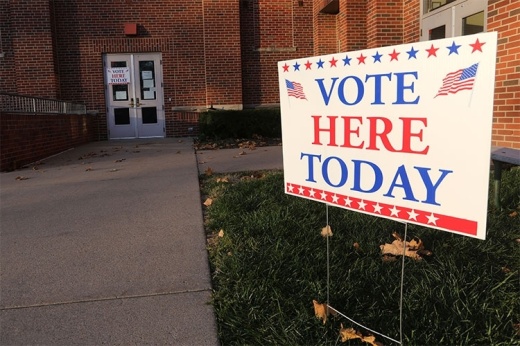Voters can approve or reject three separate propositions: $100 million for public safety facilities; $900 million for roads, drainage and multimodal transportation; and $200 million for parks. Historically, the county has proposed road and park bonds every six to eight years, most recently an $848 million bond in 2015.
Commissioners were divided on whether to hold a bond election this year, voting 3-2 to place it on the ballot Aug. 19, with Precinct 3 Commissioner Tom Ramsey and Precinct 4 Commissioner Jack Cagle opposed. But Daniel Ramos, executive director of the Office of Management and Budget, told Community Impact Newspaper he believes the county needs to issue a bond now because the 2015 bond will be almost fully expended by the end of 2023.
“Folks are driving on unsafe ... [and] poor quality roads today. Our public safety personnel are in substandard facilities today. We have folks that we can take out of the flood plain today. And all of that requires funding,” Ramos said. “Financially, it makes sense for us because projecting out how much we’re going to spend next year ... at the end of next year, we’re not going to have another funding source to continue to do projects.”
The county has not published a list of projects that would use bond funding—something Ramsey has voiced in his opposition to the bond.
“I’m not saying you have to have 99% specific projects,” Ramsey said during an Aug. 2 meeting. “But to have no specific projects? To say, ‘Let me have a blank check on road; let me have a blank check on parks; let me have a blank check on public safety?’ When that’s out there, there’s not specifics that you can communicate with people.”
The county did not publish a list for the 2015 bond, according to prior Community Impact Newspaper reporting. Grant Martin—a political consultant who ran the 2012 and 2017 bond campaigns for the city of Houston—said it is not typical to have a set list of projects for bond referendums.
“It’s tough to put a list of guaranteed projects on a ballot because of the voters,” said Martin, who has run campaigns for Precinct 1 Commissioner Rodney Ellis and is currently running Precinct 2 Commissioner Adrian Garcia’s campaign. “You don’t want to be in a position where the voters have approved money for [a project that] is impossible to complete.”
However, county officials have presented some information on how the money for each proposition could be spent during Commissioners Court meetings. Road work
Out of $900 million in mobility bonds, $300 million would go to general road bonds. Harris County Engineer Milton Rahman said individual precincts can use this flexible funding for any applicable capital road projects.
The court members voted 3-2 to adopt a “worst-first” policy to direct bond money to areas of greatest need during their Aug. 2 meeting, with Ramsey and Cagle opposed. A minimum of $220 million would be allocated to each precinct under this policy, and the remainder would either be allocated to each precinct based on need at a later date or managed centrally by the county engineer’s office, according to Ramos. “Any way you slice and dice, the precinct commissioners will have to make decisions of how to prioritize,” Rahman said.
Another $200 million for neighborhood drainage would help get the county’s current $600 million-plus drainage program across the finish line, Rahman said, with 80%-90% of the projects to reduce flooding risk for around 4,000 structures set to be completed by 2024. Improving street drainage adds a layer of flood protection for structures outside the flood plain.
“The structures, the pipes, the inlets you have [for] the ditches in your neighborhood [do] not have the capacity to handle more than two to three inches of rainfall in a 24-hour [period],” he said.
Additionally, $100 million for road rehabilitation would go toward repairing roads in poor to fair condition—roads need attention before they deteriorate so much to require rebuilding, Rahman said. Rebuilding a road can cost six to 10 times more than rehabilitating it, he said.
Of the remaining $300 million, $200 million would go to partnership funding with local entities such as cities and municipal utility districts, $50 million would fund multimodal transit such as sidewalks and trails and $50 million would fund Vision Zero—a program to reduce the number of traffic-related fatalities by re-engineering layouts of high-injury corridors.
Parks and public safety
The $200 million for parks and trails planned in the bond would be more than the $95 million and $60 million for parks in 2007 and 2015 bonds, respectively, combined. Ramos said the commissioners have already spent all of their allocated money for parks and will not be able to fund any projects next year if the bond does not pass unless they pull from their general funds. He said the parks funds could also help address unequal access to parks or parks not in compliance with the Americans with Disabilities Act.
“Any time there is potential of more funding for parks and green space, we are in support,” Beth White, president and CEO of the Houston Parks Board, said in a statement. “We look forward to learning more about how the county bond might continue the important work of connecting people to parks.”
Meanwhile, the $100 million for public safety facilities could fund capital improvement projects. The Harris County Sheriff’s Office proposed four in a document submitted to Commissioners Court on Aug. 2, including a facility to train first responders on flood and swift-water rescue operations and another facility to simulate active shooter scenarios.
Sheriff’s office spokesperson Jason Spencer told Community Impact Newspaper there has been ongoing dialogue for years with county departments about facilities needs and training challenges.
“[The bond does not] address every need that we have, but we also recognize the need to be good stewards of resources and tax dollars, and [that] we're asking voters to consider this referendum at a time when we know that many residents are struggling to make ends meet,” Spencer said. “At the end of the day, we feel like [the bond] does make a significant appreciable improvement in our ability to protect the community.”
Financial impact, timing concerns
If approved, the bonds would lead to a tax rate increase of $.012 per $100 valuation, according to Ramos. For a Harris County homeowner whose house is valued at $300,000, the bond will cost $32 a year after homestead exemptions.
The life of the $1.2 billion bond is 25 years, during which time the county would sell bonds incrementally to about a dozen financial institutions.
Ramsey and Cagle have referred to the bond as a tax increase during court meetings, with Cagle saying in an Aug. 2 meeting he believes this is not the time to tax the public.
“[The public] had to tighten their belt coming out of the pandemic,” Cagle said. “They have had to tighten their belt coming out of Harvey, and I think we should do the same. This is not the time [for a bond election].”
Ramos said because the county has continually paid off its debt service—the sum of the principal and interest on all sources of the county’s debt—above what was required, the $32 a year would not increase taxes by a corresponding amount for most taxpayers. As the debt from previous bonds is retired, the county can replace it with new debt to fund projects and keep the tax rate the same or lower.
“Taxes for Harris County residents will continue to go down over the next decade, barring something unforeseen,” he said at an Aug. 18 meeting. Ramsey and Cagle both questioned the timing and transparency of the bond. Cagle cited the 23 meetings held leading up to the Harris County Flood Control District’s $2.5 billion bond in 2018.
“We came to the public with 23 watershed meetings and told them what we were going to spend it on,” Cagle told Community Impact Newspaper. “So the public is in favor of a tax increase when they get to see what ... the increase is going to go [to].”
Carl Apple, director of communications for the county engineer, said the county’s outreach plan for 2022 includes 24 community meetings before the start of early voting—the dates, times and locations of which are available at harriscounty2022bond.org.
County officials also cited historically higher voter turnout for elections in even-numbered years. County elections office’s data showed the 2018 election had a 52.86% voter turnout rate compared to a 16.72% rate in 2019.
“We’re doing it much more responsibly than we did with a $2.5 billion [flood] bond that they did for Hurricane Harvey, and we’re doing it on the same ballot that people running for office will be on,” Garcia told Community Impact Newspaper. “We’re giving this bond package the full opportunity to be seen and heard by the voters.”
Rev. James Caldwell, founder of the Coalition of Community Organizations—a group based in Fifth Ward that addresses community-relevant issues across the city of Houston and Harris County—told Community Impact Newspaper his organization was in support of the bond.
Echoing similar sentiments that Ellis expressed during court meetings, Caldwell wanted to ensure there was an equity component to the distribution of funds that he said had been missing with previous bonds.
"We just want to fell like we're part of the equity process ... and we're not being left behind," Caldwell said. "And [that] what happens on the west side [and] northwest also happens on the east side and northeast with the same fervor, with the same input [and] the same amount of investment."





